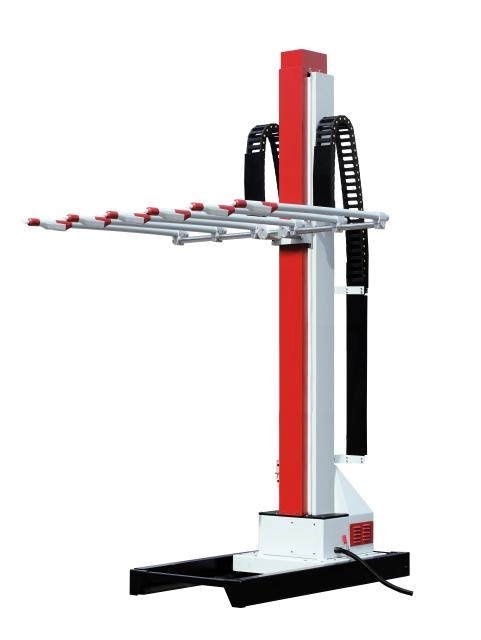Content Menu
● Understanding Electrostatic Spray Technology
>> What is Electrostatic Spray Painting?
>> How Do Manual Electrostatic Spray Guns Work?
● Advantages of Using Manual Electrostatic Spray Guns
>> High Transfer Efficiency
>> Reduced Overspray
>> Versatility in Application
● Challenges of Using Manual Electrostatic Spray Guns on Complex Geometry Surfaces
>> Surface Preparation
>> Operator Skill and Experience
>> Limitations with Certain Materials
● Best Practices for Using Manual Electrostatic Spray Guns
>> Adjusting Settings for Complex Shapes
>> Maintaining Equipment
>> Conducting Test Sprays
● Conclusion
>> Frequently Asked Questions
Electrostatic spray guns have revolutionized the painting and coating industry, particularly in applications requiring precision and efficiency. This article explores the suitability of manual electrostatic spray guns for complex geometry surfaces, examining their advantages, limitations, and best practices for achieving optimal results.

Understanding Electrostatic Spray Technology
What is Electrostatic Spray Painting?
Electrostatic spray painting is a process that uses an electric charge to attract paint particles to a surface. This technology enhances the efficiency of paint application by minimizing overspray and ensuring a more uniform coating. The charged particles are drawn to the grounded or oppositely charged surfaces, making it particularly effective for intricate shapes and designs.
How Do Manual Electrostatic Spray Guns Work?
Manual electrostatic spray guns operate by charging the paint particles as they exit the nozzle. The gun typically features a trigger mechanism that allows the operator to control the flow of paint. When the paint is sprayed, the electrostatic charge causes the particles to adhere to the surface, resulting in a smooth and even finish. This method is especially beneficial for surfaces with complex geometries, as it allows for better coverage in hard-to-reach areas.
Advantages of Using Manual Electrostatic Spray Guns
High Transfer Efficiency
One of the primary benefits of manual electrostatic spray guns is their high transfer efficiency. This means that a greater percentage of the paint reaches the surface being coated, reducing waste and lowering material costs. The electrostatic attraction helps the paint wrap around edges and contours, ensuring that even complex shapes receive adequate coverage.
Reduced Overspray
Manual electrostatic spray guns significantly reduce overspray compared to traditional spray methods. This is particularly advantageous in environments where paint waste can lead to increased costs and environmental concerns. The ability to control the spray pattern and charge allows for precise application, minimizing the amount of paint that escapes into the air.
Versatility in Application
These spray guns are versatile and can be used with various types of coatings, including liquid paints and powders. This adaptability makes them suitable for a wide range of applications, from automotive refinishing to industrial coatings. The ability to switch between different materials without changing equipment is a significant advantage for manufacturers.
Challenges of Using Manual Electrostatic Spray Guns on Complex Geometry Surfaces
Surface Preparation
While manual electrostatic spray guns are effective for complex geometries, proper surface preparation is crucial. Surfaces must be clean, dry, and free of contaminants to ensure optimal adhesion of the paint. Any imperfections or residues can lead to defects in the finish, such as uneven coating or peeling.
Operator Skill and Experience
The effectiveness of manual electrostatic spray guns also depends on the skill and experience of the operator. Achieving a uniform finish on complex shapes requires a good understanding of the equipment and the painting process. Operators must be trained to adjust the settings based on the specific requirements of the job, including the type of coating, surface material, and geometry.
Limitations with Certain Materials
Some materials may not be suitable for electrostatic spraying due to their resistivity. For instance, waterborne coatings often require specific handling and may not perform well with standard electrostatic guns. It is essential to select the right type of paint and ensure compatibility with the electrostatic system to avoid issues during application.
Best Practices for Using Manual Electrostatic Spray Guns
Adjusting Settings for Complex Shapes
When working with complex geometry surfaces, it is vital to adjust the settings of the spray gun accordingly. This includes modifying the voltage, air pressure, and spray pattern to accommodate the intricacies of the surface. Operators should experiment with different settings to find the optimal configuration for each specific application.
Maintaining Equipment
Regular maintenance of the spray gun is essential to ensure consistent performance. This includes cleaning the nozzle and other components after each use to prevent clogs and ensure a smooth flow of paint. Additionally, operators should inspect the equipment for any signs of wear or damage and replace parts as necessary.
Conducting Test Sprays
Before commencing a full-scale application, conducting test sprays on similar materials can help identify any potential issues. This practice allows operators to fine-tune their technique and settings, ensuring that the final application meets quality standards.
Conclusion
Manual electrostatic spray guns are indeed suitable for complex geometry surfaces, offering numerous advantages such as high transfer efficiency, reduced overspray, and versatility in application. However, achieving the best results requires careful consideration of surface preparation, operator skill, and equipment maintenance. By following best practices and understanding the limitations of the technology, manufacturers can leverage manual electrostatic spray guns to enhance their coating processes and achieve high-quality finishes on intricate designs.

Frequently Asked Questions
1. What types of surfaces can manual electrostatic spray guns be used on?
- Manual electrostatic spray guns can be used on a variety of surfaces, including metal, plastic, and wood. They are particularly effective on complex geometries where traditional spray methods may struggle.
2. How do I ensure proper adhesion of the paint?
- Proper surface preparation is crucial. Ensure that the surface is clean, dry, and free of contaminants. Additionally, selecting the right type of coating for the material is essential for optimal adhesion.
3. Can I use waterborne paints with manual electrostatic spray guns?
- Yes, but it is important to ensure that the spray gun is compatible with waterborne coatings. Some electrostatic systems may require specific adjustments or isolation systems for optimal performance with these materials.
4. What maintenance is required for manual electrostatic spray guns?
- Regular cleaning of the nozzle and components is necessary to prevent clogs. Operators should also inspect the equipment for wear and replace parts as needed to maintain performance.
5. Is operator training necessary for using manual electrostatic spray guns?
- Yes, operator training is essential to ensure that users understand how to adjust settings and techniques for different applications, particularly when working with complex geometries.
Hot Tags: China, Global, OEM, private label, manufacturers, factory, suppliers, manufacturing company










































 .
. 